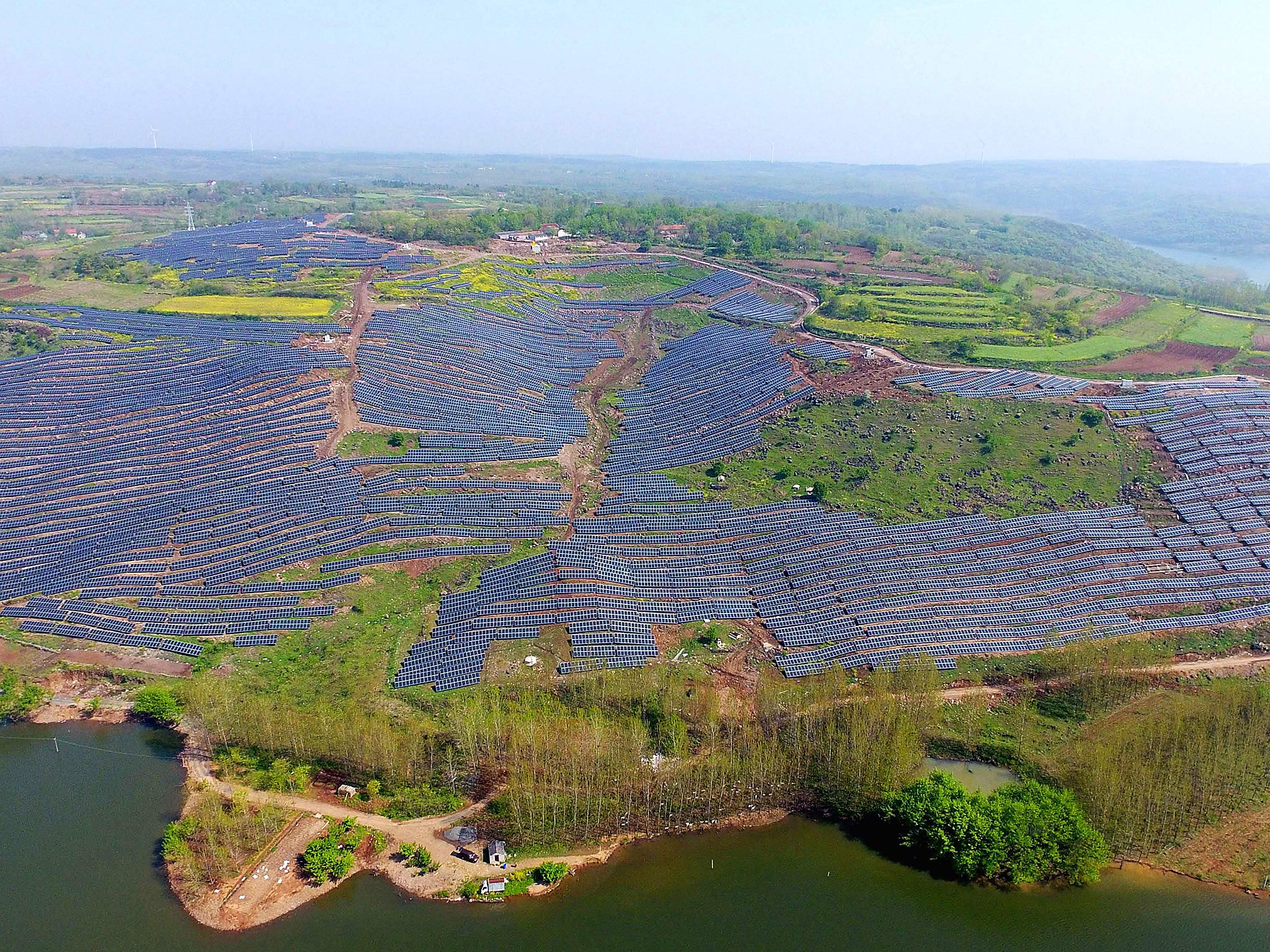IEA lifts five-year renewable energy forecast following record 2016
The agency has upped its forecasts for renewables over the next five years, which follows a record 2016 that was mostly driven by a boost in solar photovoltaic capacity in China, India and the United States

Your support helps us to tell the story
From reproductive rights to climate change to Big Tech, The Independent is on the ground when the story is developing. Whether it's investigating the financials of Elon Musk's pro-Trump PAC or producing our latest documentary, 'The A Word', which shines a light on the American women fighting for reproductive rights, we know how important it is to parse out the facts from the messaging.
At such a critical moment in US history, we need reporters on the ground. Your donation allows us to keep sending journalists to speak to both sides of the story.
The Independent is trusted by Americans across the entire political spectrum. And unlike many other quality news outlets, we choose not to lock Americans out of our reporting and analysis with paywalls. We believe quality journalism should be available to everyone, paid for by those who can afford it.
Your support makes all the difference.The International Energy Agency (IEA) has raised its forecasts for renewable energy over the next five years following a record 2016, mainly driven by a surge in solar photovoltaic (PV) capacity in China, India and the United States.
In its medium-term renewables market report, the IEA expects global renewable electricity capacity to rise by more than 920 gigawatts, or 43 per cent, by 2022, due to supportive policies for low-carbon energy and cost reductions for solar PV and wind.
The projected growth is 12 percent more bullish than the IEA’s forecast last year.
In 2016, net additions to renewable energy capacity - including hydropower, solar, wind, bioenergy, wave and tidal - set another world record, growing by 165 gigawatts (GW), 6 percent more than in 2015, the report said.
Solar capacity grew by 50 per cent to reach more than 74 GW last year and it was the first time solar PV additions rose faster than any other fuel, surpassing the net growth in coal.
“We see renewables growing by about 1,000 GW by 2022, which equals about half of the current global capacity in coal power, which took 80 years to build,” Fatih Birol, the IEA’s executive director, said in a statement.
“What we are witnessing is the birth of a new era in solar PV. We expect that solar PV capacity growth will be higher than any other renewable technology through 2022,” Birol added.
The Paris-based IEA, the West’s leading energy forecaster, had been criticised by environment campaigners in previous years for underestimating the growth of renewables and over-emphasising the continued role of fossil fuels.
The agency sees renewable power generation rising by more than a third to 8,169 terawatt-hours (TWh) in 2022 - from around 6,012 TWh in 2016 - which is equivalent to the combined electricity consumption of China, India and Germany.
Renewables will account for 29 percent of the global energy mix in five years’ time, compared to the 24 percent forecast last year.
“While coal remains the largest source of electricity generation in 2022, renewables close in on its lead. In 2016, renewable generation was 34 percent less than coal but by 2022 this gap will be halved to just 17 percent,” the report said.
China will be responsible for the largest amount of global renewable capacity growth, driven by strong Government targets, economic incentives and air pollution concerns.
Despite policy uncertainty, the United States will remain the second-largest renewables growth market, mainly due to tax incentives and state-level policies for solar PV, the IEA said.
India’s renewable electricity growth could surpass the European Union’s by 2022 for it to become the joint second-largest growth market alongside the United States as it is seen more than doubling its current capacity.
Reuters
Join our commenting forum
Join thought-provoking conversations, follow other Independent readers and see their replies
Comments